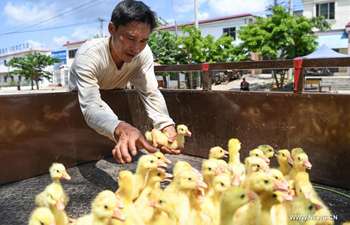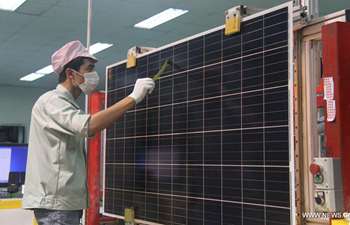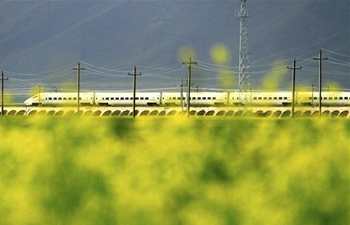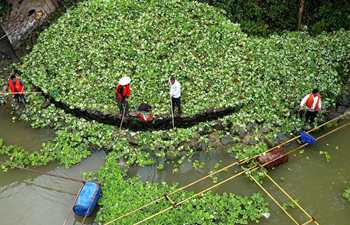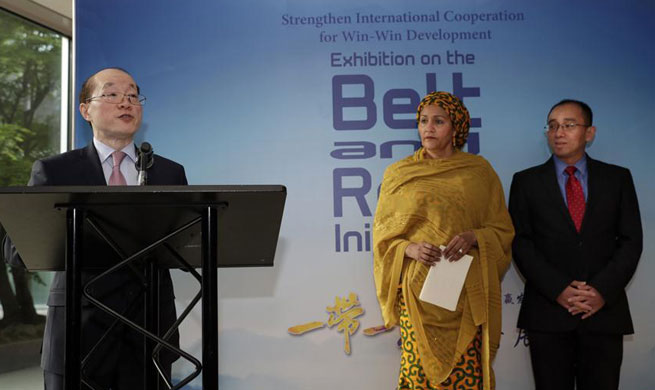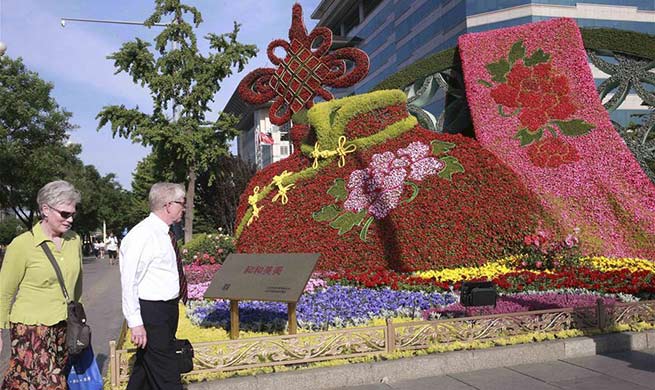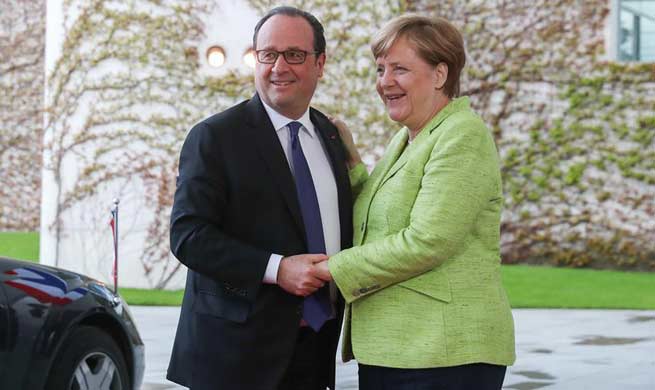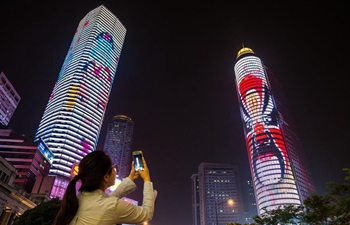BEIJING, May 9 (Xinhua) -- In the not-too-distant future, winds from the North Pole could power neon lights in Beijing, while solar energy collected in equatorial regions will propel electric cars in Marrakech.
Though it sounds like science fiction, this soon-to-be reality is the result of an ambitious energy network scheme.
As the world's biggest energy consumer and fastest growing non-fossil fuel market, China is pushing for global energy interconnection (GEI), an integrated, smart and clean grid to revolutionize lagging energy infrastructure.
The plan, proposed nearly two years ago, is expected to gain new momentum from the upcoming key forum on the Belt and Road (B&R) Initiative and will contribute to the revival of the ancient trade routes.
CHINESE SOLUTION TO WORLD ENERGY MIX
For five years, a 500-kilovolt converter station towering on the China-Russia border has steadily transmitted hydroelectricity from the other side to China's northeastern regions.
Located in Heihe City, Heilongjiang Province, the project, the largest of its kind in China, is helping the transformation of the country's falling industrial heartland, with a stable flow of cost-efficient and pollution-free power supply from Russia. Greenhouse gas emissions are being reduced and economic ties have become closer.
It not only represents reciprocal cooperation between two complementary economies but a fresh effort to overhaul localized and backward power generation and transmission globally, which have been challenged by regional energy imbalance, environmental disruption and climate change.
The Chinese leadership suggested the UN Sustainable Development Summit in September 2015 to discuss establishing the GEI to meet power demand with clean and green alternatives.
"It pointed the direction and path for a global energy revolution," renowned Chinese economist Li Yining said.
Half a year later, the Global Energy Interconnection Development and Cooperation Organization (GEIDCO) was founded in Beijing to promote the proposal. By April, it had gathered 274 members from 22 countries and regions covering five continents.
GEIDCO secretary-general Wang Yimin said the GEI is a platform that connects electric grids around the world to facilitate extensive development, deployment and utilization of clean energy, with ultra-high voltage (UHV) transmission technology as the backbone.
With technological advantages and more than half of the global wind and solar power capacity, China is able to and should seize the opportunity to push forward the GEI, Li said.
BOON TO B&R AREAS AND THE WORLD
The regions along the B&R routes boast enormous untapped potential in energy infrastructure.
Average power capacity per capita in B&R areas excluding China was less than 0.3 kW and annual power consumption per capita was only around 1,600 kWh, lower than half of the world's average, according to the International Energy Agency. Given the low base, those areas will likely see booming growth in the future, with capacity installed each year expected to soar to more than 80 million kW in 2040.
A veteran in the energy sector, GEIDCO Chairman Liu Zhenya believes energy infrastructure in B&R areas is likely to see the quickest improvement among all sectors highlighted in the B&R Initiative.
Chinese companies have moved swiftly. The State Grid Corporation of China has joined in the building of 10 transnational power transmission lines that run through countries including Russia, Mongolia and Kyrgyzstan, with combined electricity traded over 20 billion kWh. China Southern Power Grid Company has built 12 lines connected to Laos, Myanmar and Vietnam, with 47.12 billion kWh of power traded.
Addressing lingering regional power shortages and stimulating economic growth, the projects have received strong support from countries involved, with more progress in the pipeline.
Another GEIDCO official, Wan Haibin, has disclosed that the organization will sign more cooperative agreements with international peers during the B&R forum, including the UN Department of Economic and Social Affairs and some regional blocs.
Experts predicted the GEI will attract more than 50 trillion U.S. dollars of investment, thus serving as a new engine for global economic growth. The emerging industries of high-tech manufacturing, new energy and materials, and electric vehicles will be boosted.
UN Secretary-General Antonio Guterres has said the GEI should be incorporated into the 2030 Agenda for Sustainable Development.
GEIDCO plans to put intercontinental grids in place by 2050, after transnational grids on each continent are completed by 2030, and countrywide grids by 2020.





